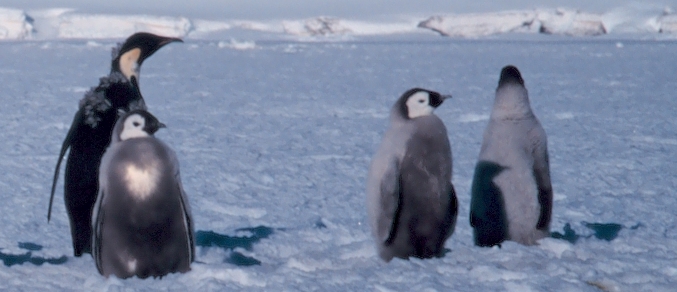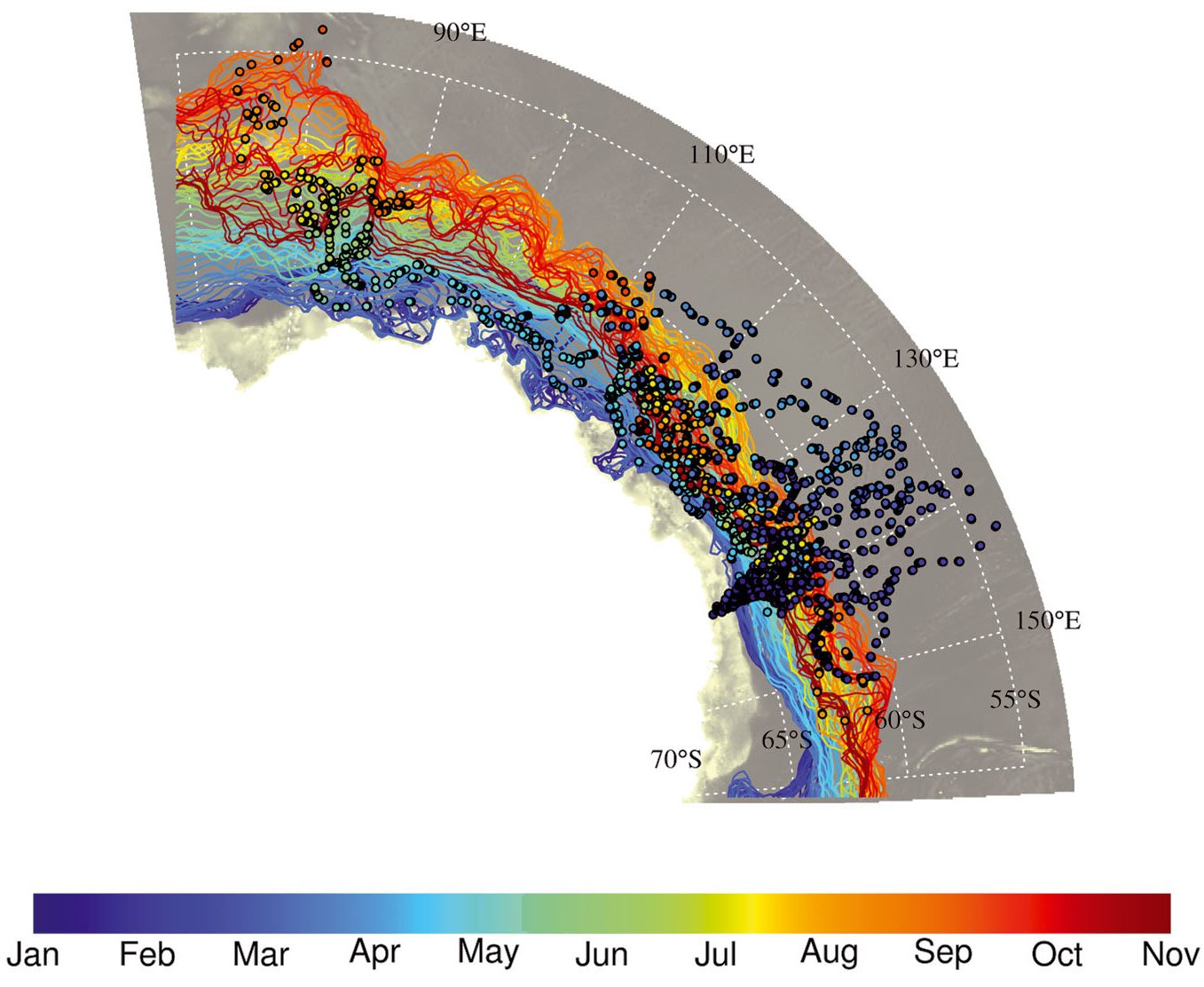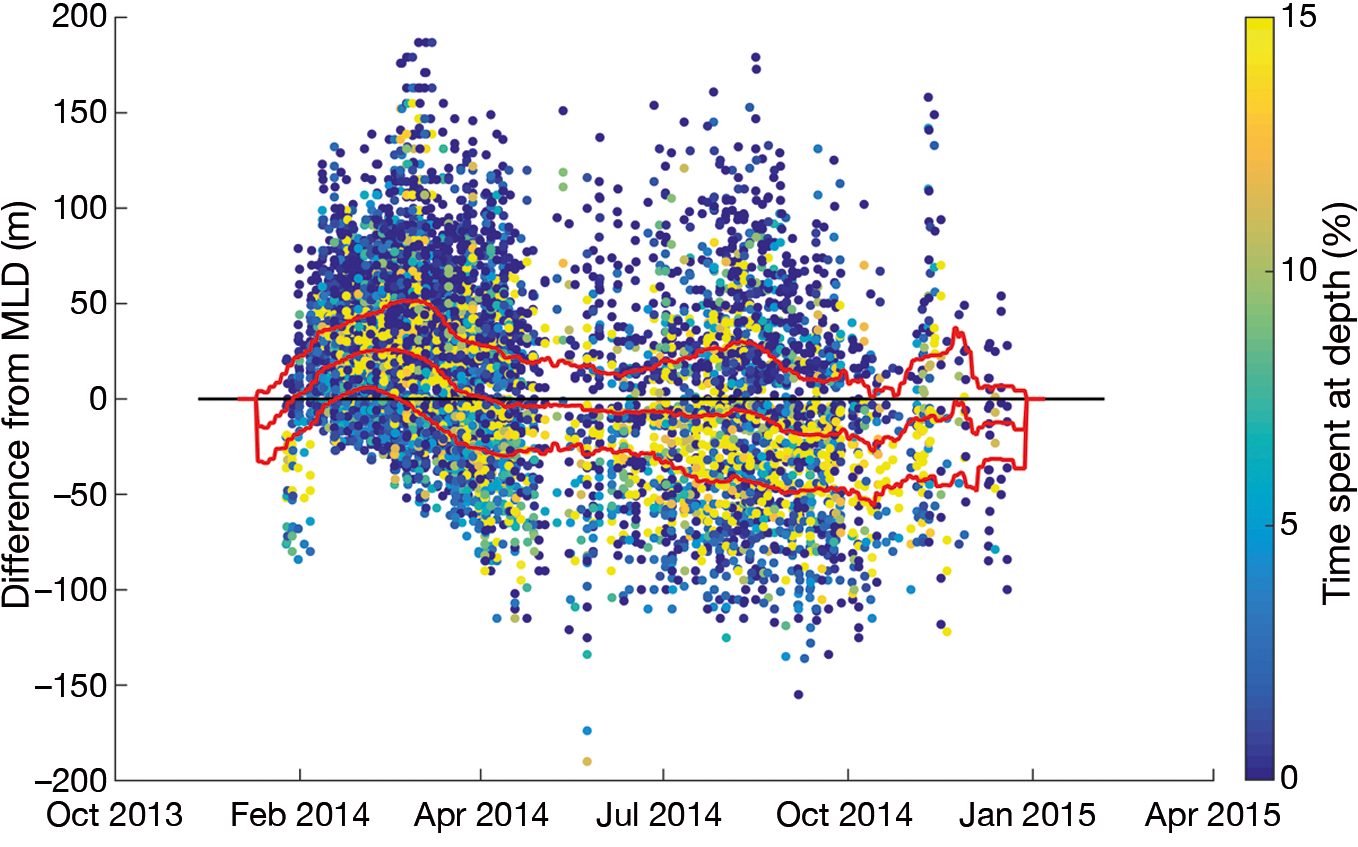← Back
Argos helps in revealing how juvenile emperor penguins learn to feed

Emperor penguins and their young are emblematic of Antarctica. Argos satellite telemetry enabled to track the adults quite early. Now the scientists are looking at how the juveniles are learning to forage in the ocean, all on their own.
At the early ages of satellite telemetry for wildlife monitoring, the PTTs were not as miniaturized as they are now. Thus only animals over a certain size could be tracked. This applied to whole species which couldn’t be tracked. But also applied to the juvenile within a species, often too small to be equipped even when the adults could. At the same time, the juvenile behavior, habitat and vulnerabilities (including lack of experience) could be noticeably different.
In the oceans, in particular, the early life of most marine species remains a mystery. A number of them must learn every aspect of their life by themselves.
Emperor penguins (Aptenodytes forsteri) have been tracked from the early 1990s (among other species of penguins, see 5 key figures for World Penguins’ Day), but only when adults, often breeding ones. From autumn to spring, they forage either in polynyas or open water areas over the continental slope, or in pack-ice regions further off-shore. Juvenile emperor penguins leave their birthplace and the colony in December to forage at sea, completely on their own. At this stage, the juveniles have not yet reached the size of their parents.
Tracking young emperor penguins on their first trip to sea
Fifteen juvenile emperor penguins were equipped from the Pointe Géologie colony (Dumont d’Urville station in Terre Adélie, East Antarctica) with data-archiving tags. The tags were recording both locations and dives (depth, duration, etc., with also the water temperature). Moreover, sea ice data including ice coverage concentration and extent, from passive microwave satellite data (AMSR-2) have been analyzed for the study. The juvenile penguins were tracked from 86 to 344 days, which was an unprecedented record for Adélie Land Emperors penguins, with travels up to 7794 km, and as far away as 3503 km from the starting colony. The retrieved data include 62 453 dives between December 2013 and December 2014
The fifteen juveniles first traveled north, up to 53.76° S, close to the Antarctic polar front. In March/April, they turned back south, reaching sea ice covered areas in April/May. They remained there, within 100−200 km of the northern ice edge and often in areas with sea ice coverage and concentration over 90% until the tags stopped transmitting (the longest tracking (in time) stopped in December (2014)). This was a surprise, since the sea ice region was supposed to be an especially complex environment to forage in for juveniles, inducing difficulties of surfacing to breath, and a patchy distribution of prey making it even harder for inexperienced individuals. Contrary to the breeding adults, they did not spend much time in polynyas.

Tracks of the 15 juvenile emperor penguins (dots) and sea ice edge (lines) at different times of the year 2014; the ice edge lines and penguin location dots are colored with respect to time following the same color scale. (Credit CEBC/CNRS, from [Labrousse et al, 2019])
Diving at different depths to feed
The diving depth depends on the season, likely in response to changes in prey distribution. In summer and early autumn, the dives are shallower and close to the ice margins where’s there an enhanced biological activity. When within sea ice, the juvenile emperor penguins dived both at shallow and deep depths during daylight (there’s few dives at night). The data from the 15 juvenile tracking show for the first time that they dive to the lower limit of the ocean mixed layer, i.e., down to the thermocline, especially in winter. This discontinuity is where their prey, animals such as lanternfish or small crustaceans, reliably aggregate.

Times series of depth-difference between the 15 juvenile emperor penguins’ depth and the mixed layer depth (Credit CEBC/CNRS, from [Labrousse et al, 2019])
Juvenile emperor penguin learning capabilities
That sea emancipation after fledging is critical for penguins, since they must learn their environment all on their own to feed from it, and need to be quick learners to survive. Our understanding of the role of learning and sensory capacities involved is still largely lacking. Studies of juvenile emperor penguins from other colonies would be necessary, too, to generalize the conclusions. More studies may also reveal the role of foraging tactics in such marine predator early-life survival.
Reference
- Labrousse S, Orgeret F, Solow AR, Barbraud C and others (2019) First odyssey beneath the sea ice of juvenile emperor penguins in East Antarctica. Mar Ecol Prog Ser 609:1-16. https://doi.org/10.3354/meps12831
- Centre of Biological Studies of Chizé
- https://www.facebook.com/CEBCULR/
Photo: juvenile emperor penguins; the leftmost one seems to be at the very end of moulting, and should leave for the sea very soon (Credit NOAA/Nesdis Michael Van Woert)
